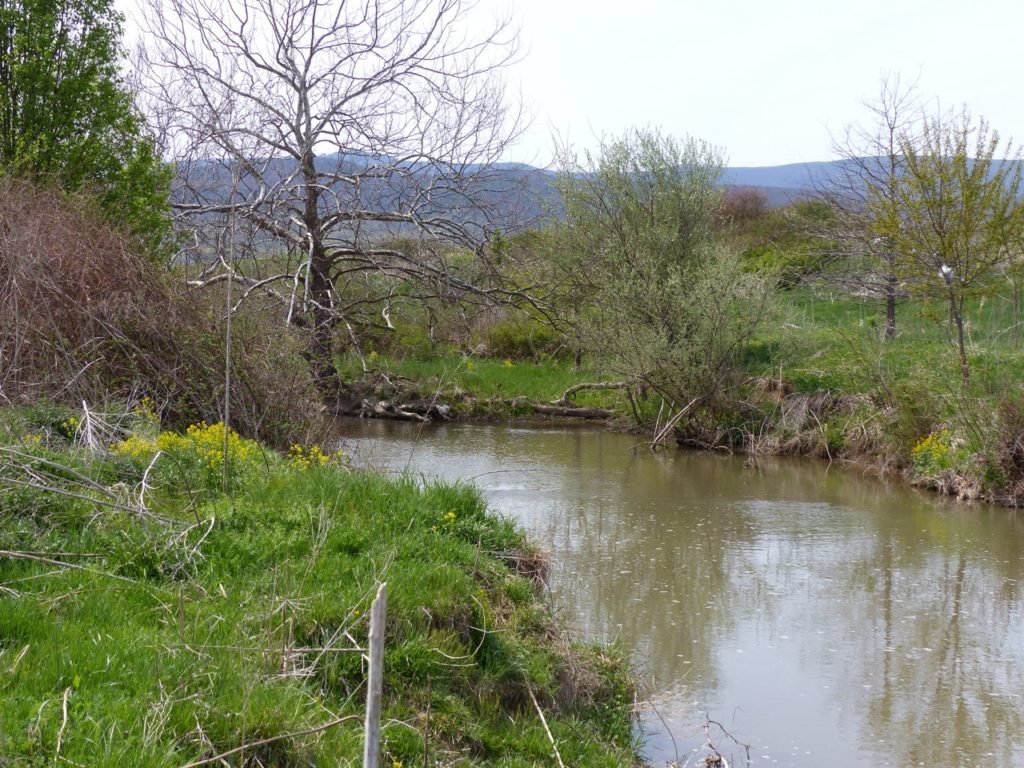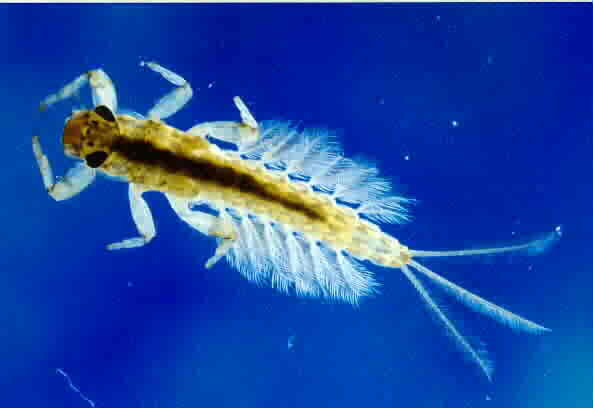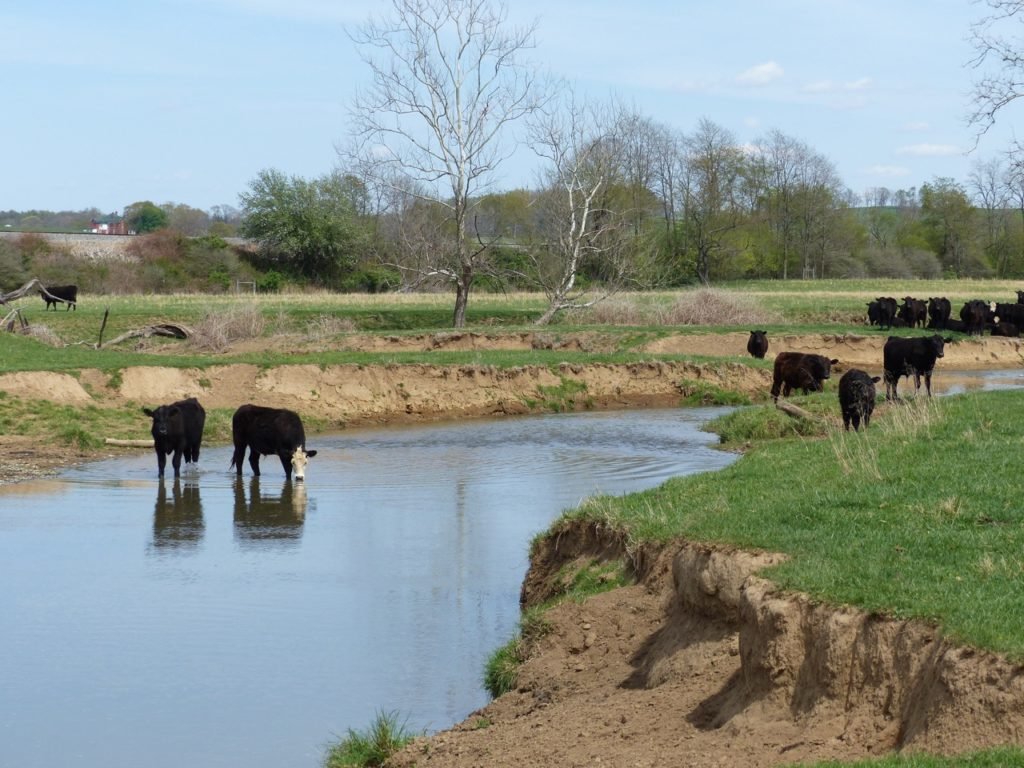The downstream and upstream pictures in this post were published by the Bay Journal in William Funk’s article “Virginia Faulted for Handling of Cattle Pollution in Shenandoah“.
Cattle Destroy Streams and the Aquatic Ecosystem.
Livestock that have access to streams and rivers pollute the water with their manure and urine. But perhaps even worse, when they access a stream and “hang out” to cool off, their cloven hooves gouge and dislodge soil from the banks of the stream causing the death of the aquatic ecosystem.
On average, a mature cow weights half a ton. Think about a herd of fifty, half-ton cows with hooves like big ice cream scoops climbing up and down a stream bank. The soil ripped out by their hooves gets in the stream and suffocates the critters that live in it. If there are cows in the stream, the water is going to be brown – like chocolate milk, because of all the dislodged soil suspended in the water.
A Picture is Worth a Thousand Words.
Two pictures are worth two thousand words. I stood on the bank of Middle River looking downstream at a farm that allows cattle into the river and took this picture. All the stream banks are denuded.
I turned around, on the same spot and took the next picture looking upstream. The farmer of this land removed cattle from the river in 2002. Notice the banks. There is little if any exposed soil. Look again. Downstream, upstream. A stark and profound difference isn’t it?

On this farm the stream banks are stabilized. Cattle were excluded from the river on this farm in 2002. © R. Whitescarver
Sediment Suffocates the Aquatic Ecosystem
Dislodged soil that enters a stream or river smothers and suffocates the aquatic ecosystem. For example, the larval stages of mayflies, dragonflies, and stoneflies have external gills. Sediment in the water clogs those gills causing their suffocation and death.

This Mayfly nymph lives in clean streams and has external gills. Notice the feathery structures on each side of the insect’s abdomen. These are external gills. Suspended soil particles in the water clog these gills.
Fencing livestock, especially cattle out of streams and rivers is vital for a functioning aquatic ecosystem, cleaner streams and a restored Chesapeake Bay. There are many advantages for farmers as well such as healthier livestock, ease of herd movement and the elimination of calving risk areas.
There are many programs that can help do this with technical assistance and funding. Contact me or any of the organizations listed below to find out more.
Your local Soil and Water Conservation District.
The Chesapeake Bay Foundation.
The Alliance for the Chesapeake Bay.
The Chesapeake Bay Program of EPA.
© Robert Whitescarver 2017


31 Comments
Leave your reply.